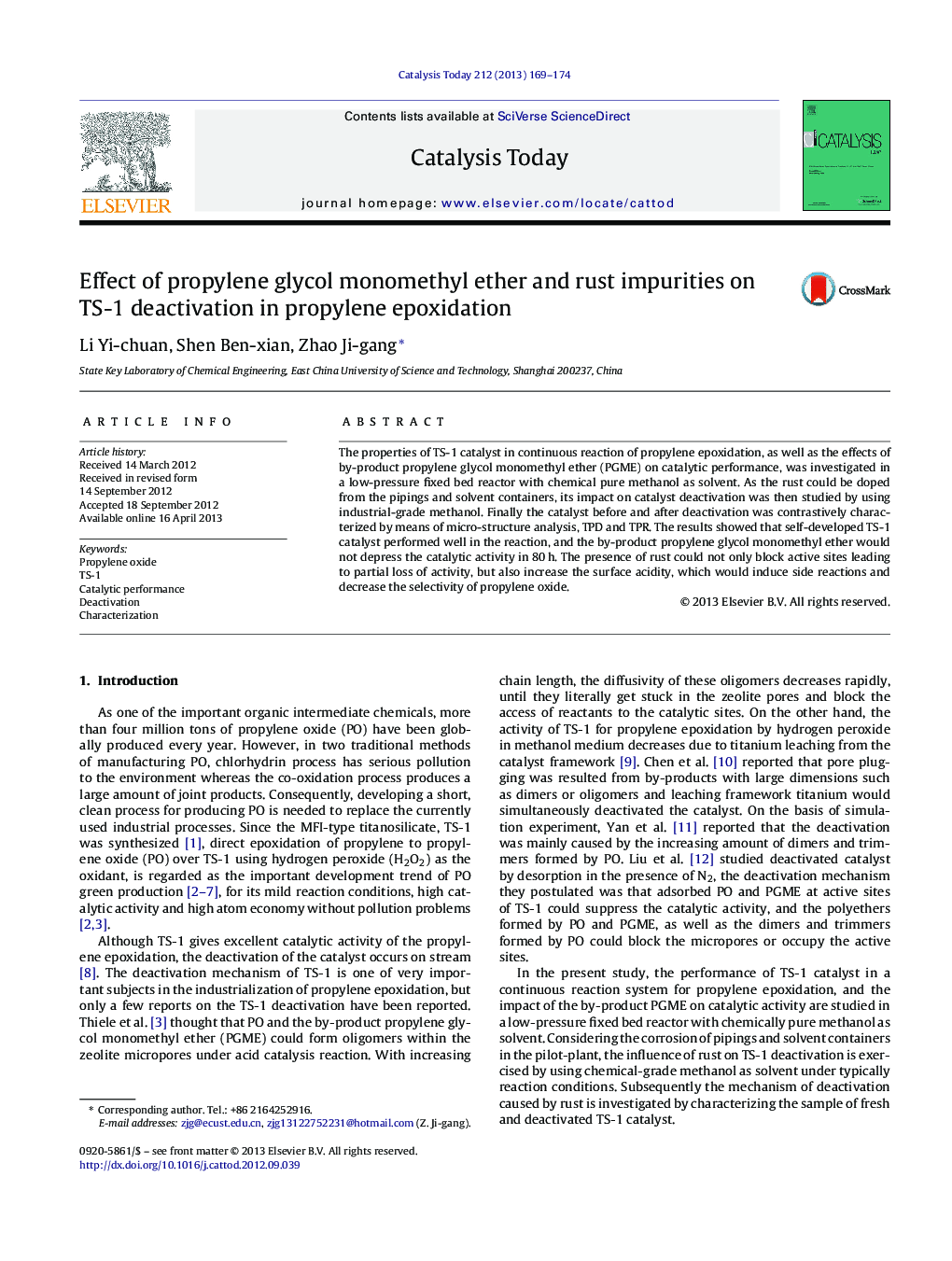| Article ID | Journal | Published Year | Pages | File Type |
|---|---|---|---|---|
| 54822 | Catalysis Today | 2013 | 6 Pages |
•PGME would not disturb the catalytic activity in our propylene epoxidation system.•The presence of rust led to the surface morphology alterations of TS-1 catalyst.•The presence of rust led to significant increase of surface acidity of TS-1.•Rust must be removed from the feedstock to keep the property and stability of TS-1.•Acidity of TS-1 must be controlled to keep the property and stability of catalyst.
The properties of TS-1 catalyst in continuous reaction of propylene epoxidation, as well as the effects of by-product propylene glycol monomethyl ether (PGME) on catalytic performance, was investigated in a low-pressure fixed bed reactor with chemical pure methanol as solvent. As the rust could be doped from the pipings and solvent containers, its impact on catalyst deactivation was then studied by using industrial-grade methanol. Finally the catalyst before and after deactivation was contrastively characterized by means of micro-structure analysis, TPD and TPR. The results showed that self-developed TS-1 catalyst performed well in the reaction, and the by-product propylene glycol monomethyl ether would not depress the catalytic activity in 80 h. The presence of rust could not only block active sites leading to partial loss of activity, but also increase the surface acidity, which would induce side reactions and decrease the selectivity of propylene oxide.
Graphical abstractLong-run test of the catalyst for propylene epoxidation.Figure optionsDownload full-size imageDownload high-quality image (59 K)Download as PowerPoint slide
